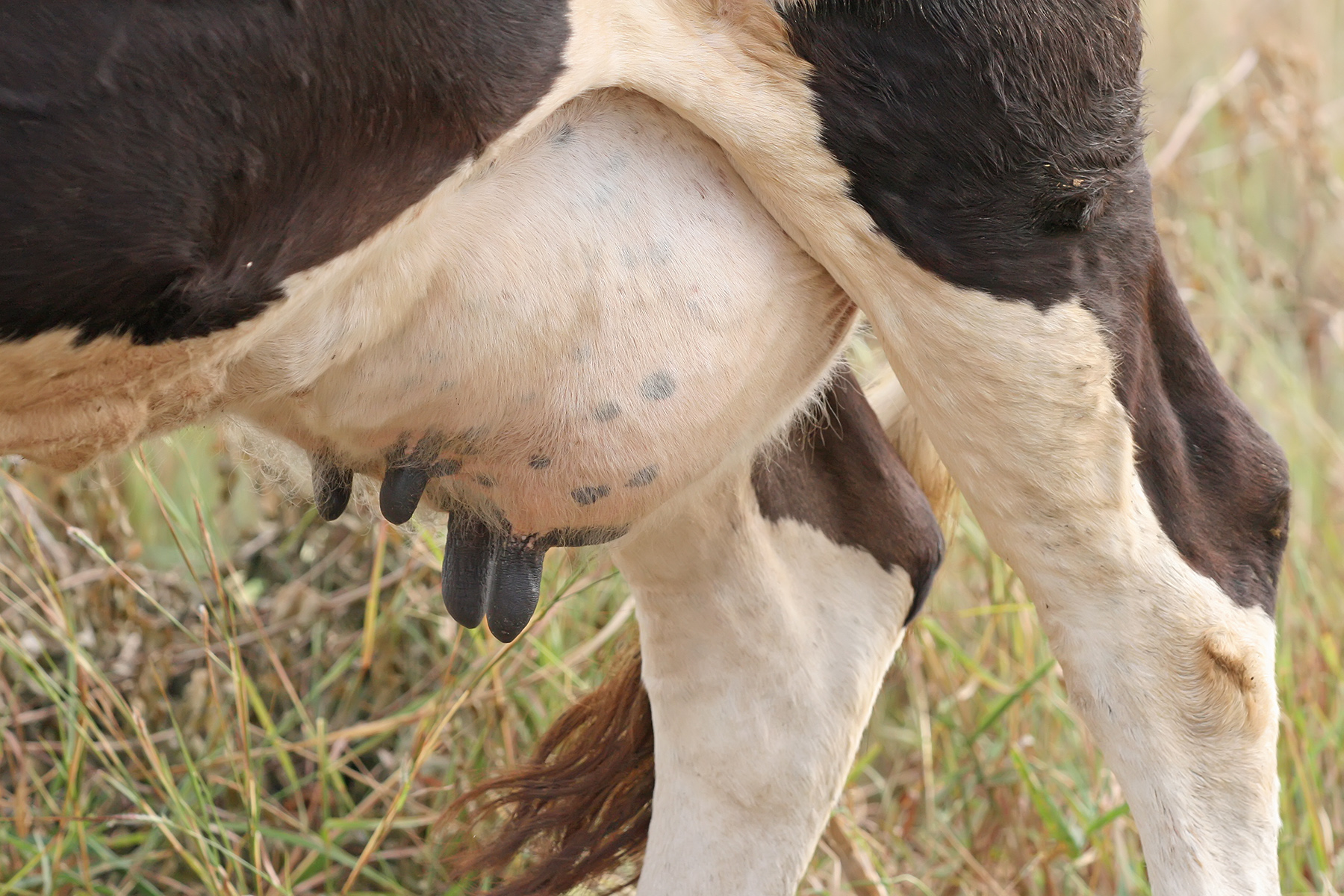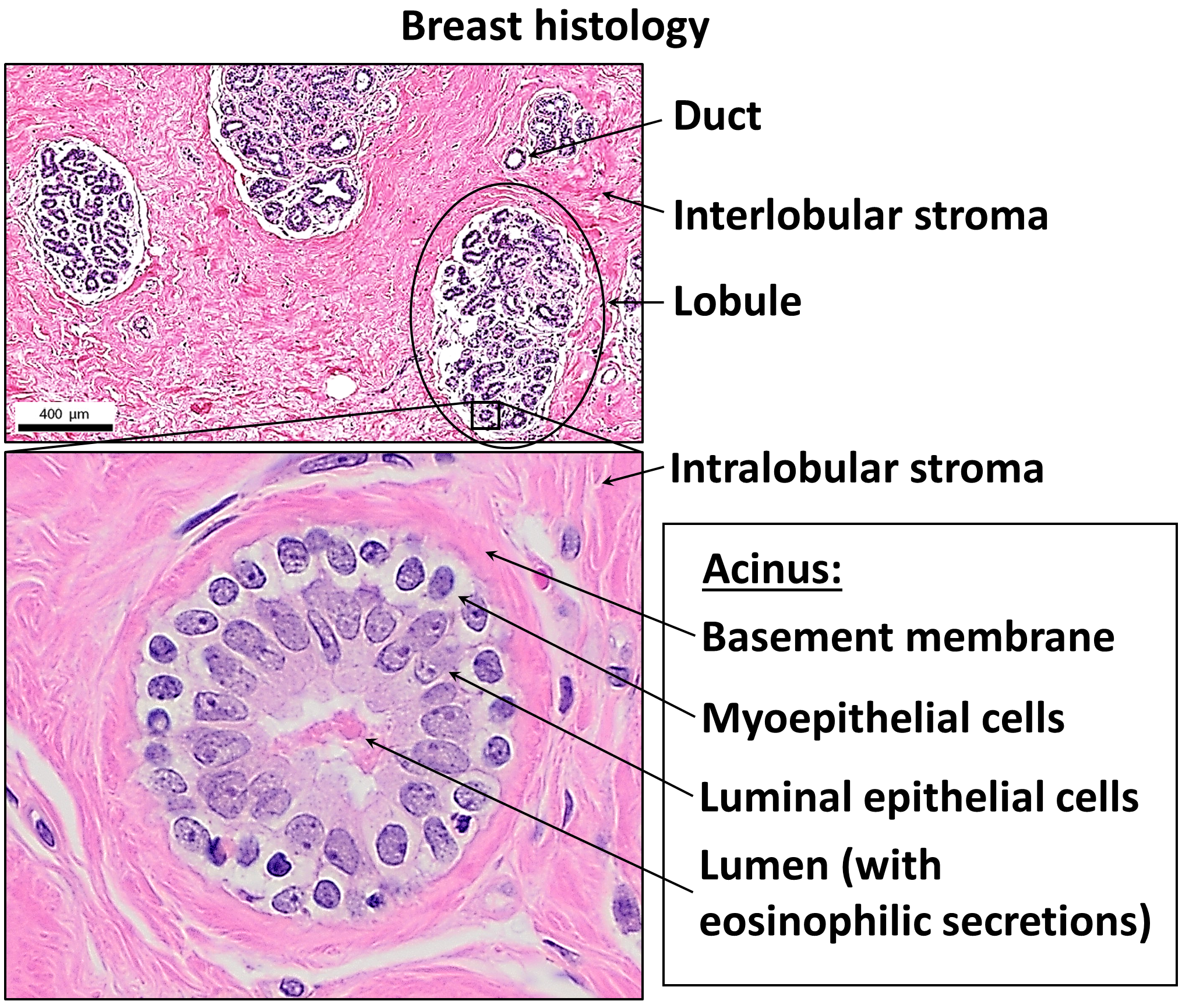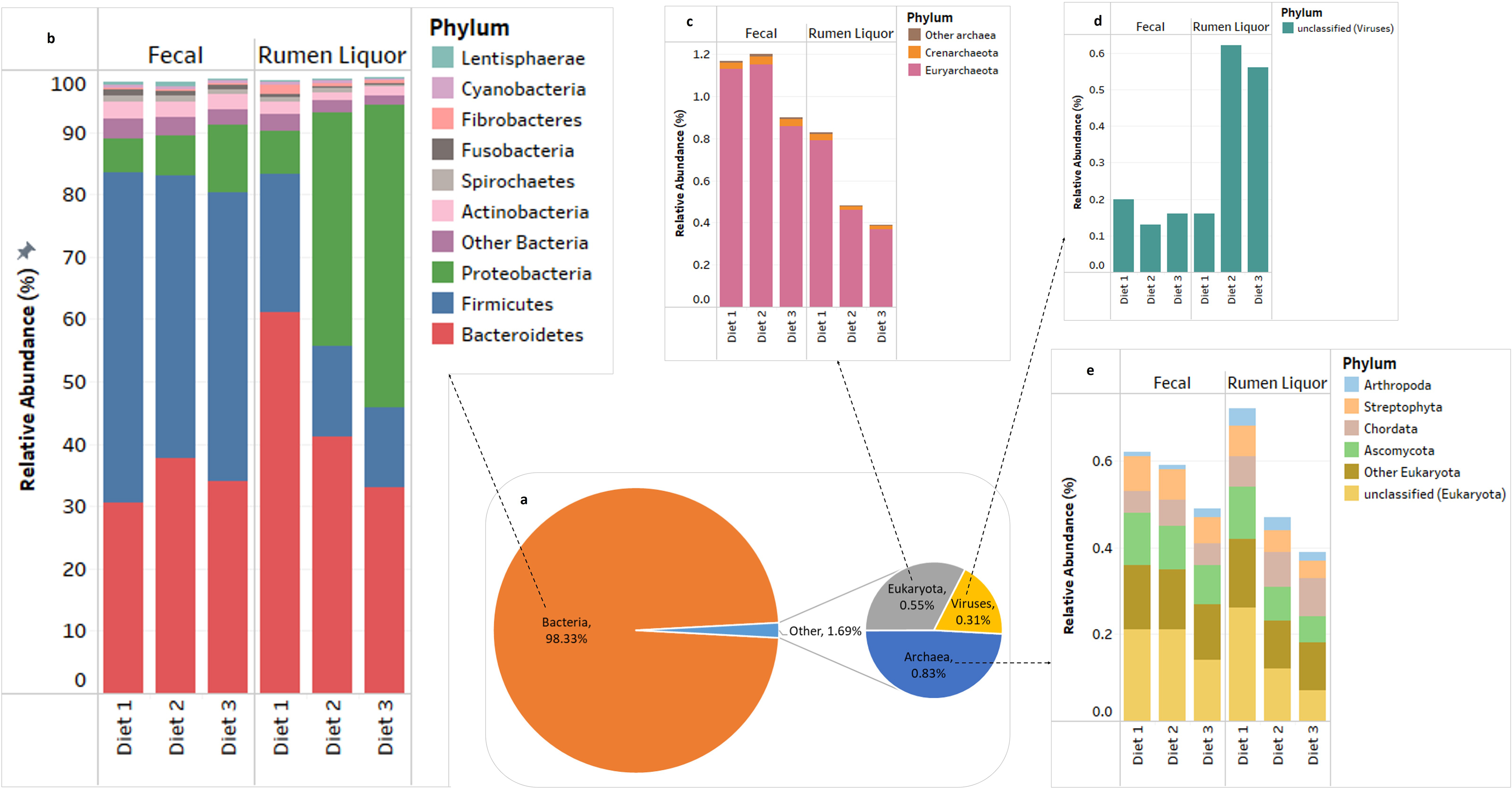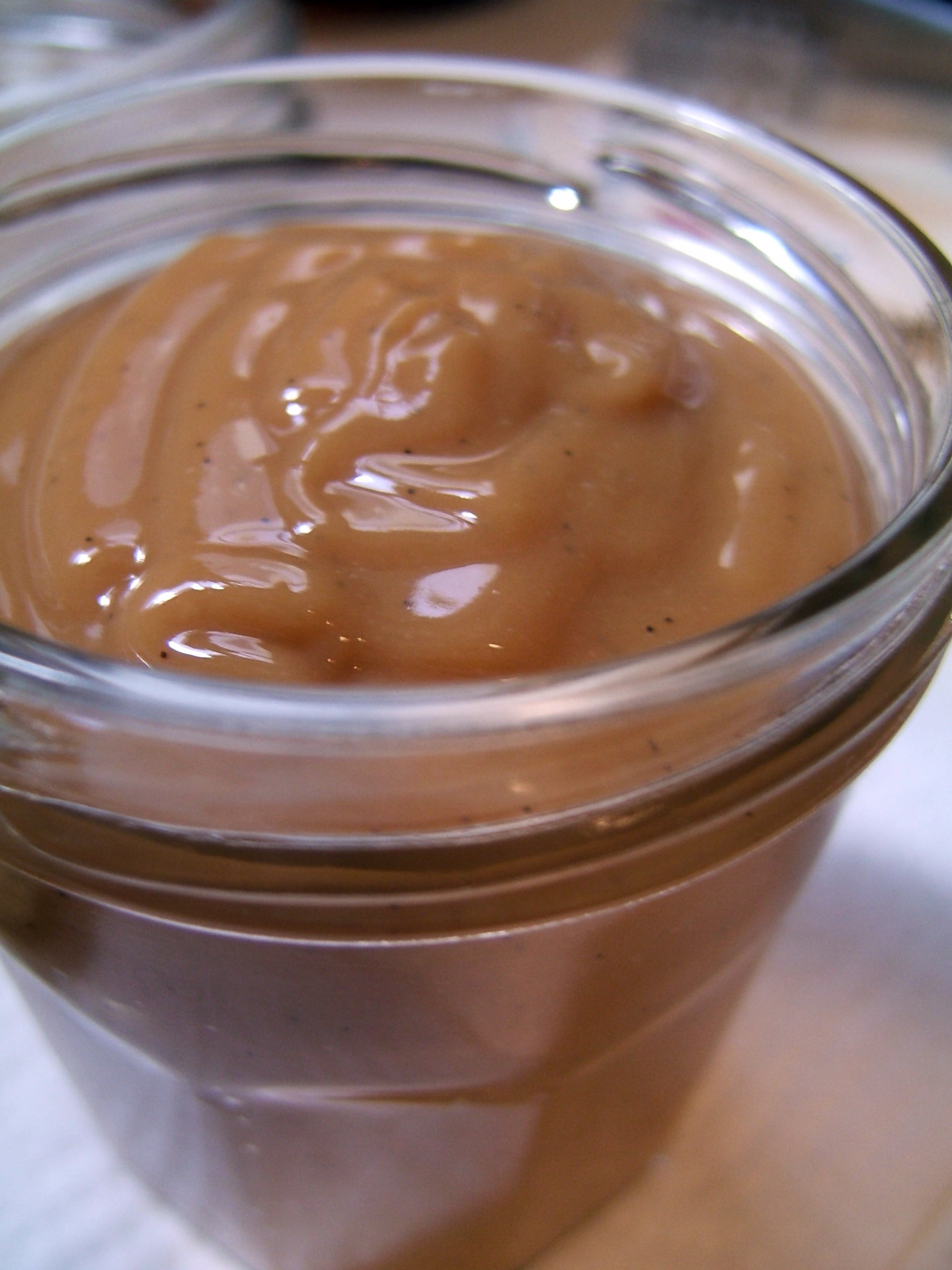|
Udder
An udder is an organ formed of two or four mammary glands on the females of dairy animals and ruminants such as cattle, goats, and sheep. An udder is equivalent to the breast in primates, elephantine pachyderms and other mammals. The udder is a single mass hanging beneath the animal, consisting of pairs of mammary glands with protruding teats. In cattle, camels and deer, there are normally two pairs, in sheep and goats, there is one pair, and in some animals, there are many pairs. In animals with udders, the mammary glands develop on the milk line near the groin. Mammary glands that develop on the chest (such as in primates and elephants) are generally referred to as breasts. Udder care and hygiene in cows is important in milking, aiding uninterrupted and untainted milk production, and preventing mastitis. Products exist to soothe the chapped skin of the udder. This helps prevent bacterial infection, and reduces irritation during milking by the cups, and so the cow is less ... [...More Info...] [...Related Items...] OR: [Wikipedia] [Google] [Baidu] |
Mastitis In Dairy Cattle
Bovine mastitis is the persistent, inflammatory reaction of the udder tissue due to physical trauma or microorganisms infections. Mastitis, a potentially fatal mammary gland infection, is the most common disease in dairy cattle in the United States and worldwide. It is also the most costly disease to the dairy industry. Milk from cows suffering from mastitis has an increased somatic cell count. Prevention and control of mastitis requires consistency in sanitizing the cow barn facilities, proper milking procedure and segregation of infected animals. Treatment of the disease is carried out by penicillin injection in combination with sulphar drug. Definition Mastitis occurs when white blood cells (leukocytes) are released into the mammary gland, usually in response to bacteria invading the teat canal or occasionally by chemical, mechanical, or thermal trauma on the udder. Milk-secreting tissue and various ducts throughout the mammary gland are damaged due to toxins released by the ... [...More Info...] [...Related Items...] OR: [Wikipedia] [Google] [Baidu] |
Mammary Glands
A mammary gland is an exocrine gland that produces milk in humans and other mammals. Mammals get their name from the Latin word ''mamma'', "breast". The mammary glands are arranged in organs such as the breasts in primates (for example, humans and chimpanzees), the udder in ruminants (for example, cows, goats, sheep, and deer), and the dugs of other animals (for example, dogs and cats) to feed young offspring. Lactorrhea, the occasional production of milk by the glands, can occur in any mammal, but in most mammals, lactation, the production of enough milk for nursing, occurs only in phenotypic females who have gestated in recent months or years. It is directed by hormonal guidance from sex steroids. In a few mammalian species, male lactation can occur. With humans, male lactation can occur only under specific circumstances. Mammals are divided into 3 groups: monotremes, metatherians, and eutherians. In the case of monotremes, their mammary glands are modified sebaceou ... [...More Info...] [...Related Items...] OR: [Wikipedia] [Google] [Baidu] |
Teat
A teat is the projection from the mammary glands of mammals from which milk flows or is ejected for the purpose of feeding young. In many mammals, the teat projects from the udder. The number of teats varies by mammalian species and often corresponds to the average litter size for that animal. In some cases, the teats of female animals are milked for the purpose of human consumption. The quality of some domesticated animals is determined by the establishment of desired characteristics, such as teat size and placement. Number and positioning in other animals The number and positioning of mammary glands and teats varies widely among mammals. The protruding teats and accompanying glands can be located anywhere along the two milk lines. In general, most mammals develop mammary glands in pairs along these lines, with a number approximating the number of young typically birthed at a time. The number of teats varies from 2 (in elephants and anthropoids) to 18 (in pigs). Marsupials u ... [...More Info...] [...Related Items...] OR: [Wikipedia] [Google] [Baidu] |
Milking
Milking is the act of removing milk from the mammary glands of cattle, water buffalo, humans, goats, sheep, and, more rarely, camels, horses, and donkeys. Milking may be done by hand or by machine, and requires the animal to be currently or recently pregnant. The milker may refer either to the animal that produces the milk or the person who milks said animal. Hand milking Hand milking is performed by massaging and pulling down on the teats of the udder, squirting the milk into a bucket. Two main methods are used: *The top of the teat is pinched shut between finger and thumb, trapping milk in the lower part, which is then squeezed by the other fingers, squirting the milk out through the hole in the tip of the teat. *The top of the teat is pinched shut by the fingers and thumb, which are then slid down the teat, pushing the milk towards the bottom. Machine milking Most milking in the developed world is done using automatic milking, milking machines. Teat cups are attached to th ... [...More Info...] [...Related Items...] OR: [Wikipedia] [Google] [Baidu] |
Saterland Frisian Language
Saterland Frisian, also known as Sater Frisian, Saterfrisian or Saterlandic ( ), spoken in the Saterland municipality of Lower Saxony in Germany, is the last living dialect of the East Frisian language. It is closely related to the other Frisian languages: North Frisian language, North Frisian, spoken in Germany as well, and West Frisian languages, West Frisian, spoken in the Dutch province of Friesland. Classification From a diachronical perspective, Saterland Frisian is an ''Emsfrisian'' dialect of the East Frisian language. Emsfrisian used to be spoken in the western half of the East Frisian peninsula and in the Ommelanden. The other East Frisian dialect group was the ''Weserfrisian'', formerly spoken from the eastern half of the East Frisian peninsula to beyond the Weser. Together with West Frisian language, West Frisian and North Frisian language, North Frisian it belongs to the Frisian languages, Frisian branch of the Germanic languages. The three Frisian languages evolved ... [...More Info...] [...Related Items...] OR: [Wikipedia] [Google] [Baidu] |
Cow Udders02
Cattle (''Bos taurus'') are large, Domestication of vertebrates, domesticated, Bovidae, bovid ungulates widely kept as livestock. They are prominent modern members of the subfamily Bovinae and the most widespread species of the genus ''Bos''. Mature female cattle are called cows and mature male cattle are bulls. Young female cattle are called heifers, young male cattle are oxen or bullocks, and castrated male cattle are known as steers. Cattle are commonly Beef cattle, raised for meat, dairy cattle, for dairy products, and for leather. As draft animals, they pull carts and List of agricultural machinery, farm implements. Cattle are considered Animal worship, sacred animals within Hinduism, and it is illegal to kill them in Cattle slaughter in India, some Indian states. Small breeds such as the miniature Zebu are kept as pets. Taurine cattle are widely distributed across Europe and temperate areas of Asia, the Americas, and Australia. Zebus are found mainly in India and tr ... [...More Info...] [...Related Items...] OR: [Wikipedia] [Google] [Baidu] |
Goat
The goat or domestic goat (''Capra hircus'') is a species of Caprinae, goat-antelope that is mostly kept as livestock. It was domesticated from the wild goat (''C. aegagrus'') of Southwest Asia and Eastern Europe. The goat is a member of the family Bovidae, meaning it is closely related to the sheep. It was one of the first animals to be domesticated, in Iran around 10,000 years ago. Goats have been used for milk, Goat meat, meat, Animal fur, wool, and Animal skin, skins across much of the world. Milk from goats is often turned into goat cheese, cheese. In 2022, there were more than 1.1 billion goats living in the world, of which 150 million were in India. Goats feature in mythology, folklore, and religion in many parts of the world, including in the classical myth of Amalthea (mythology), Amalthea, in Tanngrisnir and Tanngnjóstr, the goats that pulled the chariot of the Norse god Thor, in the Scandinavian Yule goat, and in Hinduism's goat-headed Daksha. In Christianity and ... [...More Info...] [...Related Items...] OR: [Wikipedia] [Google] [Baidu] |
Cattle
Cattle (''Bos taurus'') are large, domesticated, bovid ungulates widely kept as livestock. They are prominent modern members of the subfamily Bovinae and the most widespread species of the genus '' Bos''. Mature female cattle are called cows and mature male cattle are bulls. Young female cattle are called heifers, young male cattle are oxen or bullocks, and castrated male cattle are known as steers. Cattle are commonly raised for meat, for dairy products, and for leather. As draft animals, they pull carts and farm implements. Cattle are considered sacred animals within Hinduism, and it is illegal to kill them in some Indian states. Small breeds such as the miniature Zebu are kept as pets. Taurine cattle are widely distributed across Europe and temperate areas of Asia, the Americas, and Australia. Zebus are found mainly in India and tropical areas of Asia, America, and Australia. Sanga cattle are found primarily in sub-Saharan Africa. These types, sometime ... [...More Info...] [...Related Items...] OR: [Wikipedia] [Google] [Baidu] |
Sheep
Sheep (: sheep) or domestic sheep (''Ovis aries'') are a domesticated, ruminant mammal typically kept as livestock. Although the term ''sheep'' can apply to other species in the genus '' Ovis'', in everyday usage it almost always refers to domesticated sheep. Like all ruminants, sheep are members of the order Artiodactyla, the even-toed ungulates. Numbering a little over one billion, domestic sheep are also the most numerous species of sheep. An adult female is referred to as a ''ewe'' ( ), an intact male as a ''ram'', occasionally a ''tup'', a castrated male as a ''wether'', and a young sheep as a ''lamb''. Sheep are most likely descended from the wild mouflon of Europe and Asia, with Iran being a geographic envelope of the domestication center. One of the earliest animals to be domesticated for agricultural purposes, sheep are raised for fleeces, meat ( lamb, hogget or mutton), and milk. A sheep's wool is the most widely used animal fiber, and is usually harvested by ... [...More Info...] [...Related Items...] OR: [Wikipedia] [Google] [Baidu] |
Ruminant
Ruminants are herbivorous grazing or browsing artiodactyls belonging to the suborder Ruminantia that are able to acquire nutrients from plant-based food by fermenting it in a specialized stomach prior to digestion, principally through microbial actions. The process, which takes place in the front part of the digestive system and therefore is called foregut fermentation, typically requires the fermented ingesta (known as cud) to be regurgitated and chewed again. The process of rechewing the cud to further break down plant matter and stimulate digestion is called rumination. The word "ruminant" comes from the Latin ''ruminare'', which means "to chew over again". The roughly 200 species of ruminants include both domestic and wild species. Ruminating mammals include cattle, all domesticated and wild bovines, goats, sheep, giraffes, deer, gazelles, and antelopes.Fowler, M.E. (2010).Medicine and Surgery of Camelids, Ames, Iowa: Wiley-Blackwell. Chapter 1 General Biology and ... [...More Info...] [...Related Items...] OR: [Wikipedia] [Google] [Baidu] |
Mammal Anatomy
A mammal () is a vertebrate animal of the class Mammalia (). Mammals are characterised by the presence of milk-producing mammary glands for feeding their young, a broad neocortex region of the brain, fur or hair, and three middle ear bones. These characteristics distinguish them from reptiles and birds, from which their ancestors diverged in the Carboniferous Period over 300 million years ago. Around 6,640 extant species of mammals have been described and divided into 27 orders. The study of mammals is called mammalogy. The largest orders of mammals, by number of species, are the rodents, bats, and eulipotyphlans (including hedgehogs, moles and shrews). The next three are the primates (including humans, monkeys and lemurs), the even-toed ungulates (including pigs, camels, and whales), and the Carnivora (including cats, dogs, and seals). Mammals are the only living members of Synapsida; this clade, together with Sauropsida (reptiles and birds), constitutes ... [...More Info...] [...Related Items...] OR: [Wikipedia] [Google] [Baidu] |
Chilean Cuisine
Chilean cuisine stems mainly from the combination of traditional Spanish cuisine, Chilean Indigenous peoples in Chile, Mapuche culture and local ingredients, with later important influences from other European cuisines, particularly from German cuisine, Germany, the British cuisine, United Kingdom and French cuisine, France. The food tradition and recipes in Chile are notable for the variety of flavours and ingredients, with the country's diverse geography and climate hosting a wide range of agricultural produce, fruits and vegetables. The long coastline and the peoples' relationship with the Pacific Ocean add an immense array of seafood to Chilean cuisine, with the country's waters home to unique species of fish, molluscs, crustaceans and algae, thanks to the oxygen-rich water carried in by the Humboldt Current. Chile is also one of the world's largest producers of Chilean wine, wine and many Chilean recipes are enhanced and accompanied by local wines. The confection dulce de l ... [...More Info...] [...Related Items...] OR: [Wikipedia] [Google] [Baidu] |










